We support public health organizations to center equity
At HIP, we partner with governmental public health and other public health organizations to help them expand their analysis of and adjust their practices to what’s needed to achieve health equity. Learn more about our Capacity Building Program.
Browse our capacity building resources
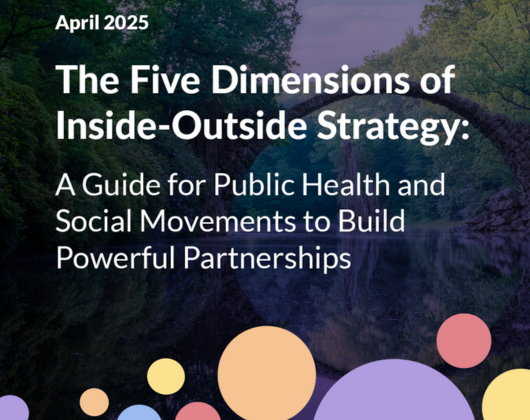
The Five Dimensions of Inside-Outside Strategy
A comprehensive Guide and Toolkit for public health and social movements to build powerful partnerships.

2024 Year in Review
A look back at our collective wins, highlights, and learnings in our work toward health equity in 2024.

Reimagining Public Health Advocacy: Findings from a National Scan of Public Health and Community Power-building Groups
Drawing on a national scan of nongovernmental public health and community power-building groups, this report explains how we at HIP approach our work to shift the field of public health, the research we conducted to better understand the gaps between public health and community power-building organizations, and the implications of what we’ve learned.
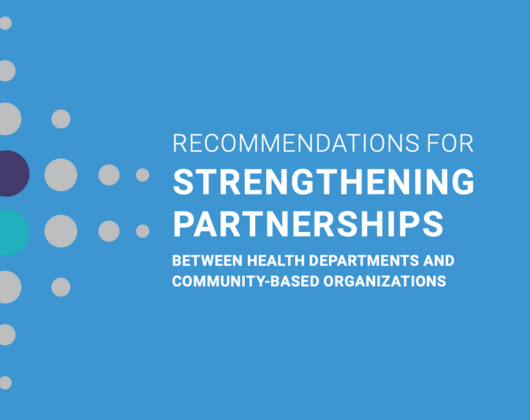
Strengthening Partnerships between Public Health and Community-Based Organizations
Developed by the CDC Foundation in collaboration with HIP, this report draws upon the experiences of over 144 health department and CBO leaders to make recommendations for how to strengthen partnerships between health departments and community-based organizations.
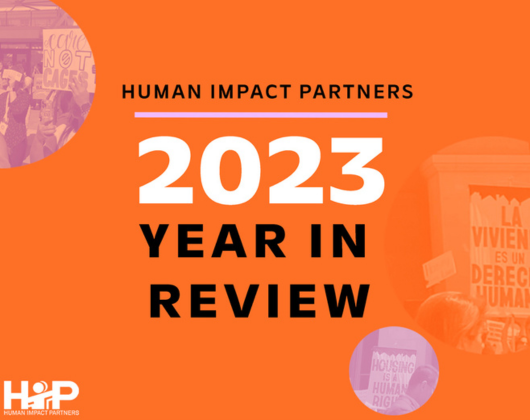
2023 Year in Review
HIP’s 2023 Year in Review offers a look back at what we accomplished in the past year, and some of the key lessons we learned along the way.
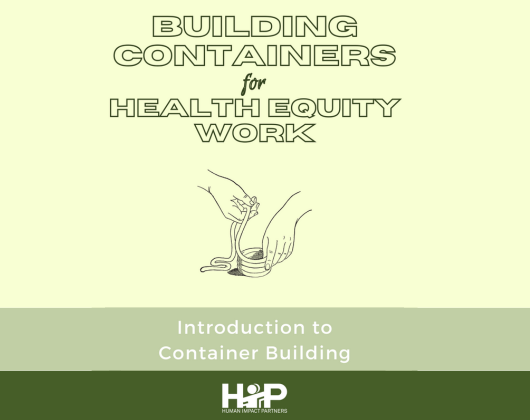
Building Containers for Health Equity Work
These resources for public health organizations share principles, practices, and tools for building containers and implementing heart-centered practices in their equity work.

Mobilizing for Action through Planning and Partnerships (MAPP) Assessment Tools
We developed three new community health assessment tools – the MAPP Community Context Assessment, the MAPP Community Partner Assessment and the MAPP Power Primer – for local health departments and others to use during Community Health Improvement processes.

Activities to Deepen Your Power-Building Analysis
This suite of resources and activities is designed for governmental health departments and agencies to dive into power: what it is, who holds it, and how to leverage and redistribute it to create more equitable and healthy communities.
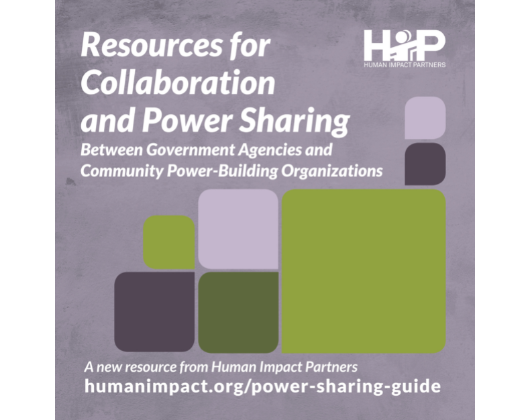
Resources for Collaboration and Power Sharing Between Government Agencies and Community Power-Building Organizations
This resource guides health departments through the why and how of partnering with Community Power-Building Organizations (CPBOs) to advance health equity, via four guides with activities to build capacity and lay the groundwork for power sharing partnerships.
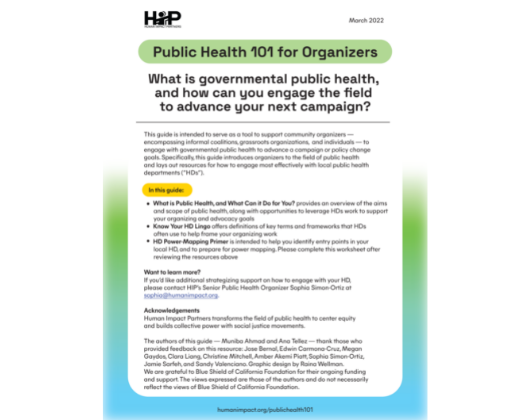
Public Health 101 for Organizers: What is governmental public health, and how can you engage the field to advance your next campaign?
This guide is intended to serve as a tool to support community organizers to engage with governmental public health to advance campaign or policy change goals.
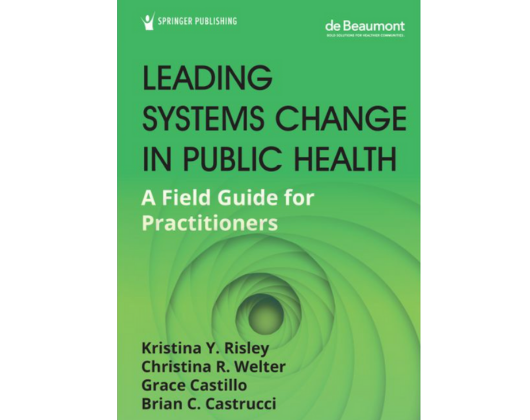
Racial Justice and Power Sharing: The Heart of Leading Systems Change
Book chapter authored by HIP co-directors Lili Farhang and Solange Gould featured in the new collection “Leading Systems Change in Public Health: A Field Guide for Practitioners.”
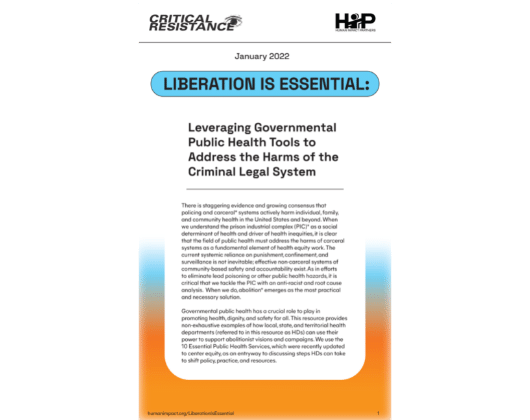
Liberation is Essential: Leveraging Governmental Public Health Tools to Address the Harms of the Criminal Legal System
We partnered with Critical Resistance to provide examples of how local, state, and territorial health departments can use the 10 Essential Public Health Services to support abolitionist visions and campaigns.

Bringing Light & Heat: An Equity Guide for Healthcare Transformation and Accountability
Health Equity Guide created in partnership with HealthBegins, Health Leads, JSI, SIREN at UCSF, and HIP to provide healthcare leaders with guidance for how to deepen, broaden, and elevate their organization’s health equity work, via a framework and process for transformation and accountability.

Shifting and Sharing Power: Public Health’s Charge in Building Community Power
Article published in NACCHO Exchange, the quarterly publication by the National Association of County & City Health Officials, that describes frameworks to explore the concepts of power and community power building as well as ways that health departments can use these concepts as part of a strategy to advance health equity.
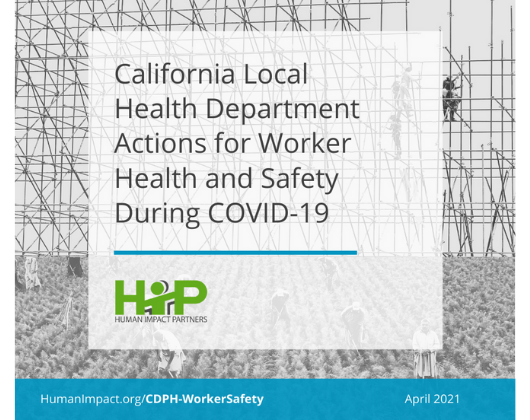
California Local Health Department Actions for Worker Health and Safety During COVID-19
With support from the California Department of Public Health Office of Health Equity, we created this resource with recommendations and actions that local health departments can take to protect worker health and safety during COVID-19 and beyond.
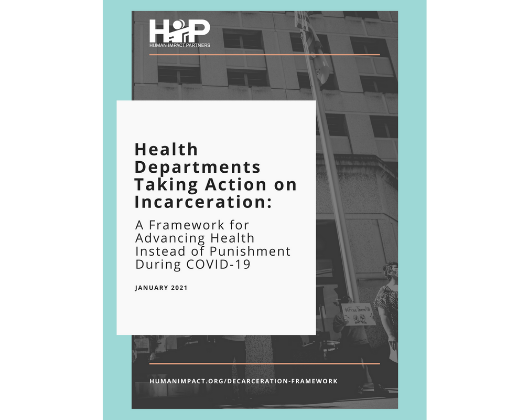
Health Departments Taking Action on Incarceration: A Framework for Advancing Health Instead of Punishment During COVID-19
The COVID-19 pandemic — and the large number of cases and deaths in jails, prisons, and detention centers — has laid bare the urgent need for decarceration as a public health strategy. This resource includes 8 recommendations and specific actions health departments can take to address the harms of incarceration.
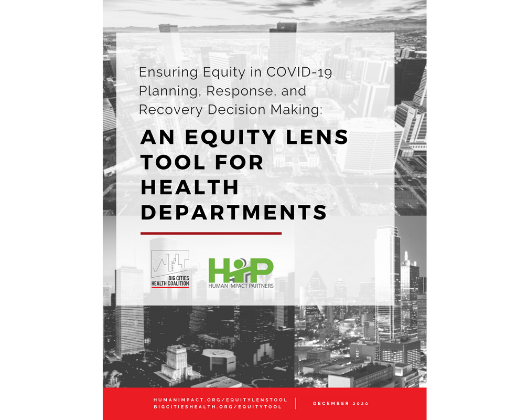
Ensuring Equity in COVID-19 Planning, Response, and Recovery Decision Making
HIP developed this Equity Lens Tool in partnership with Big Cities Health Coalition to support health departments in more directly and routinely addressing equity in COVID-19 planning, response, and recovery decision making.
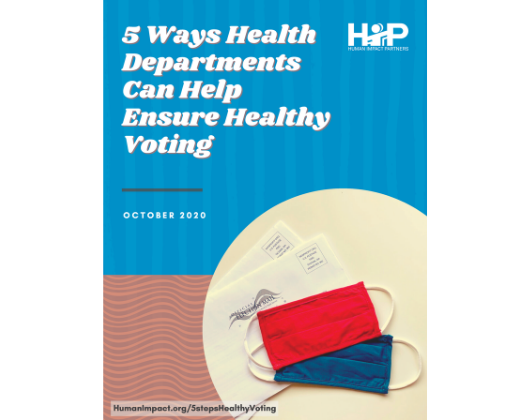
5 Ways Health Departments Can Help Ensure Healthy Voting: 2020
A healthy democracy is critical for healthy communities, and health departments have a critical role to play to ensure that all communities have a say in the conditions and decisions that impact their lives. Here are five actions health departments can take to ensure healthy voting.

How Health Departments Can Address Police Violence As a Public Health Issue
Owing to the collective work of movement builders and advocates, the field of public health has begun to reckon with the longstanding and well documented health impacts of policing and incarceration. This resource includes 5 recommendations and specific actions for health departments to take to help end police violence.

How Health Departments Can Advance Safety and Health in Protests, During a Pandemic
Communities across the US are protesting in response to the ongoing police killings of Black people and to wider social conditions that demonstrate a history of structural violence and racism against communities of color. Here are 5 steps that local and state health departments can take to protect public health in the context of these uprisings and demonstrate support for protesters’ and their demands.

Lead Local
Lead Local was a collaborative research project seeking to answer the question: How does community power catalyze, create and sustain conditions for healthy communities? As part of this project, HIP developed a primer on power, housing justice and health equity with Right to the City Alliance and a survey of health departments collaborating with community organizers.
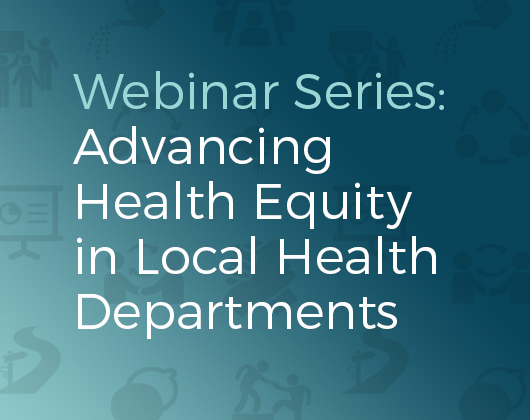
Health Equity Guide Webinar Series
HealthEquityGuide.org is a resource with inspiring examples of how health departments have concretely advanced health equity — both internally within their departments and externally with communities and other government agencies.
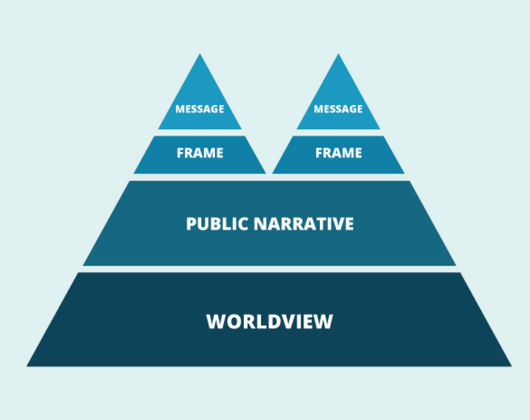
Developing a Transformational Criminal Justice Narrative: A Toolkit
The Narrative Development Toolkit is a resource intended to support community organizers and health equity advocates in developing, using, and adapting transformational narratives to advance equity in the criminal justice and juvenile justice systems. This resource was developed by a workgroup of the National Criminal Justice and Public Health Alliance.
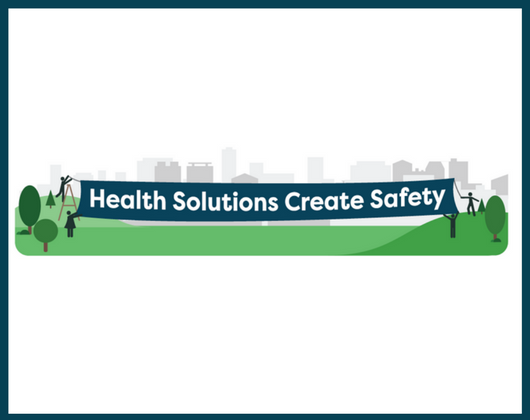
Health Solutions Create Safety: A Menu of Policies and Programs
Health Solutions Create Safety is a robust list of 36 replicable programs or interventions and 25 policies that respond to social challenges with public health solutions rather than punitive criminal justice processes. This resource was developed by a workgroup of the National Criminal Justice and Public Health Alliance to help communities achieve shared safety.
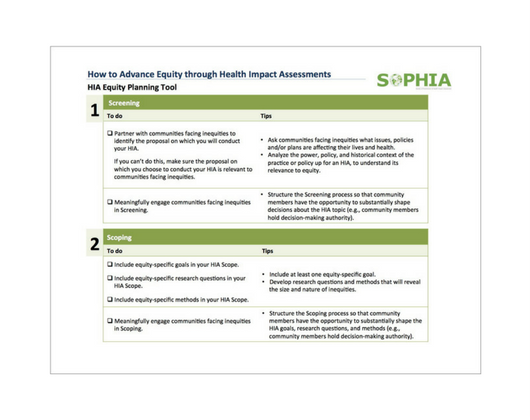
Updated Equity Metrics for Health Impact Assessment Practice
The Society of Practitioners of Health Impact Assessment’s Equity Workgroup (which HIP was a member of) published this planning and evaluation framework to help practitioners plan their approach to addressing equity in their HIA.
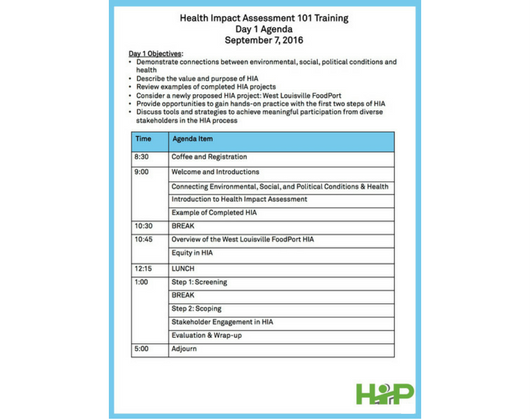
HIA Training Materials
An example of our training binder that HIP uses when it conducts a two-day HIA training. Includes slides, worksheets, exercises, and other resources that we use over the course of the training.
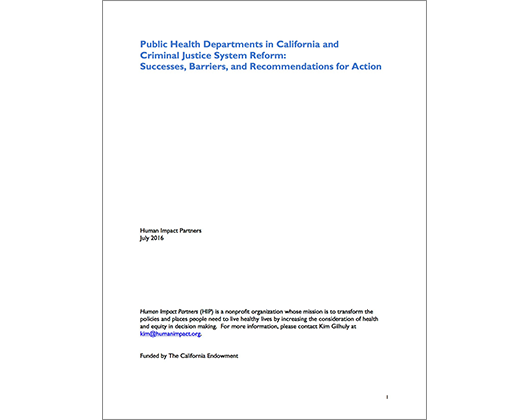
Public Health Departments in California and Criminal Justice System Reform: Successes, Barriers, and Recommendations for Action
An assessment of the barriers and successes that public health departments have experienced in participating in criminal justice system reform, with recommendations for action.
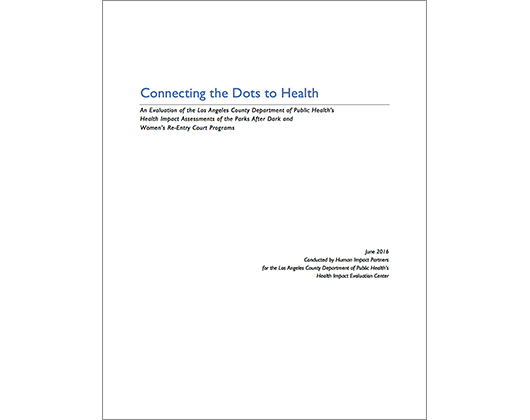
Connecting the Dots: An Evaluation of LACDPH HIAs of the Parks After Dark and Women’s Re-Entry Court Programs
Process and impact evaluation of LACDPH Parks After Dark and Women’s Re-Entry Court HIAs.
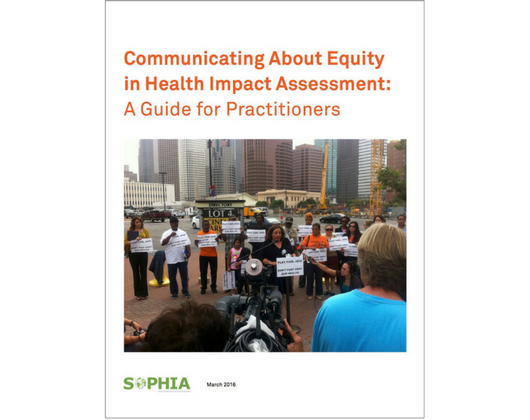
Communicating about Equity in HIA: A Guide for Practitioners
The Society of Practitioners of Health Impact Assessment’s Equity Workgroup (which HIP was a member of) developed this guide to aid HIA practitioners in how to communicate around equity within HIA while purposefully advancing equity.
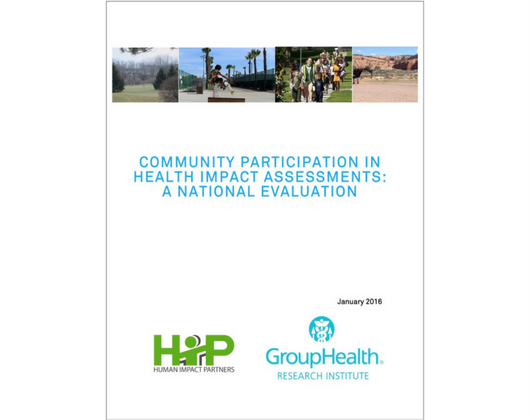
Community Participation in Health Impact Assessments: A National Evaluation
A two-year study that looked at how community participation impacted core HIA values like democracy and equity, and how participation affected the success of the HIA.

Example of a Rapid HIA Model
HIP developed and implemented a new model for conducting rapid HIAs. This model aimed to conduct an HIA within a short decision-making timeline, while maintaining a high level of stakeholder engagement in the process.

HIA Minimum Elements and Practice Standards for HIA
HIA practitioners, including HIP, developed and published this document to provide minimum elements and standards for practice in HIA.

Where Health, Planning, and Community Empowerment Meet: A Rapid Health Impact Assessment Model and its Application in LA
Abstract: There has been a surge of interest in Health Impact Assessment (HIA) in the United States, contributing to a range of practices that vary in their effort, duration, and complexity.
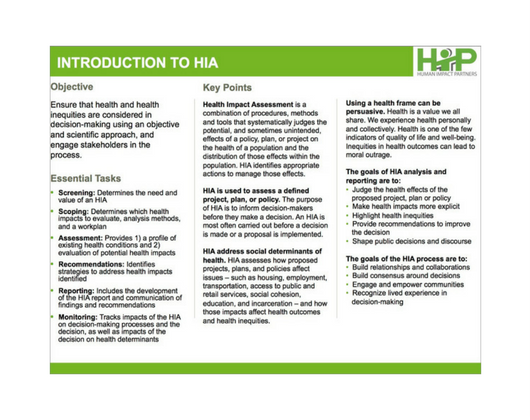
HIA Summary Guides
Two-page summaries that walk through each of the steps in HIA, as well as community participation in HIA.
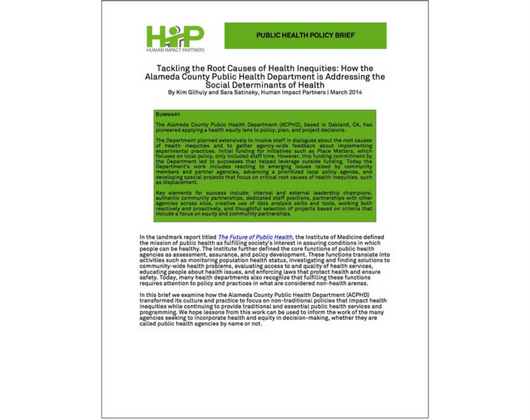
How the Alameda County Public Health Department is Addressing the Social Determinants of Health
HIP published this brief to document how the Alameda County Public Health Department transformed its culture and practice to focus on non-traditional policies that impact health inequities while continuing to provide traditional and essential public health services and programming.

HIA for Organizers
HIP published this paper to highlight for community organizers how a health perspective broadly, and Health Impact Assessment specifically, can be an effective strategy in organizing campaigns, and can be used to build community power and bring about policy wins.

FAQs about Integrating HIA into EIA
HIP developed this set of questions and answers to support people interested in better understanding how HIA relates to the field of Environmental Impact Assessment.
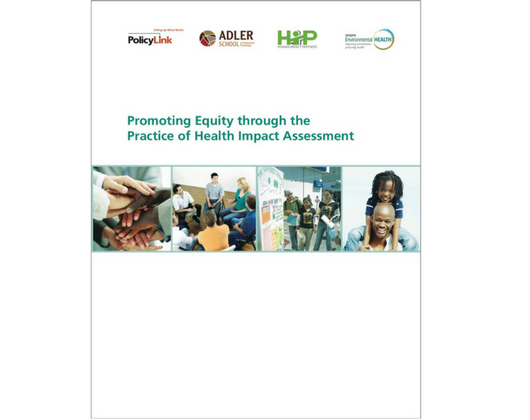
Promoting Equity Through HIA
The Society of Practitioners of Health Impact Assessment’s Equity Workgroup (which HIP is a member of) published this primer on: 1) how HIA practitioners and equity advocates can ensure that the practice of HIA maintains a strong focus on promoting equity and 2) how HIA can be used as a tool to support equitable decision-making processes and outcomes.
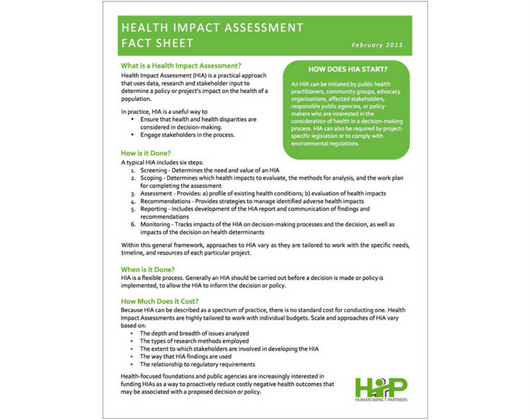
HIA Fact Sheet
A quick summary of the who, what, when, where and why of HIA (English, Spanish) + video of HIA.
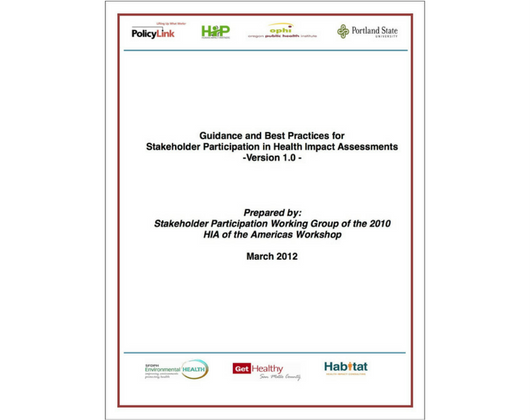
Guidance and Best Practices for Stakeholder Participation
A national workgroup of HIA practitioners (which HIP was a member of) developed this resource to show practitioners how to effectively and meaningfully involve diverse stakeholders at every stage of an HIA.
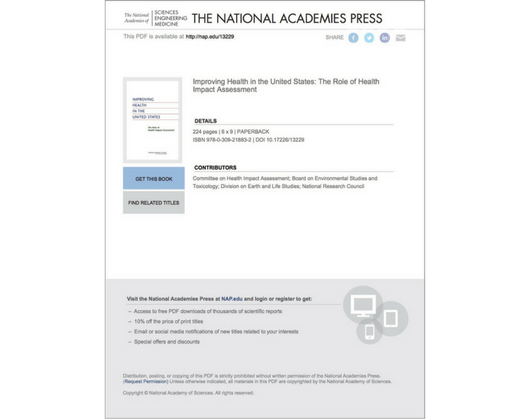
Improving Health in the United States: The Role of Health Impact Assessment
The National Research Council of the National Academies of Science published this book in 2011 to provide a definition, framework, and criteria for HIA, as well as to discuss issues in and challenges to the development and practice of HIA.
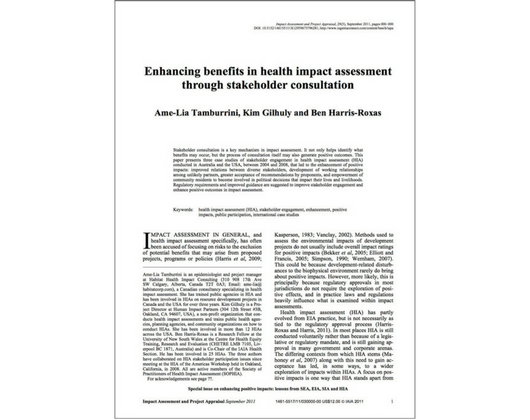
Enhancing Benefits in Health Impact Assessment through Stakeholder Consultation
Abstract: Stakeholder consultation is a key mechanism in impact assessment. It not only helps identify what benefits may occur, but the process of consultation itself may also generate positive outcomes.
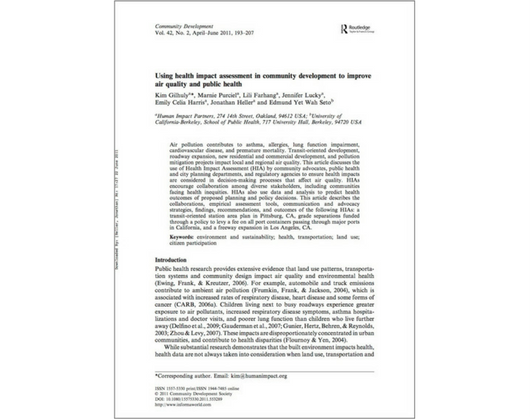
Using HIA in Community Development to Improve Air Quality and Public Health
Abstract: Air pollution contributes to asthma, allergies, lung function impairment,
cardiovascular disease, and premature mortality. Transit-oriented development,
roadway expansion, new residential and commercial development, and pollution
mitigation projects impact local and regional air quality…

A Health Impact Assessment Toolkit: A Handbook to Conducting HIA
HIP developed this toolkit to introduce and define HIA, describe each step of the HIA process, and discuss other aspects of HIA such as collaboration and when to use HIA.
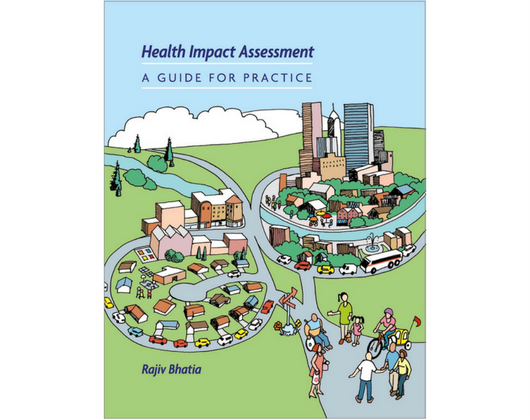
HIA: A Guide for Practice
Dr. Rajiv Bhatia (one of HIP’s co-founders) developed this guide to support practitioners in the field. It describes the key tasks and activities for HIA as well as the issues and challenges that arise in the course of practice.
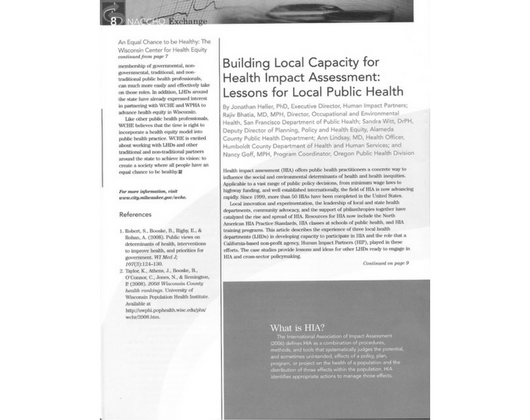
Building Local Capacity for HIA: Lessons for Local Public Health
Health impact assessment (HIA) offers public health practitioners a concrete way to influence the social and environmental determinants of health and health inequities.
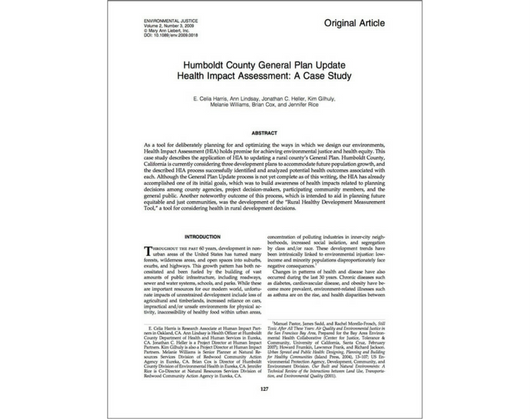
Humboldt County General Plan Update HIA: A Case Study
Abstract: As a tool for deliberately planning for and optimizing the ways in which we design our environments, Health Impact Assessment (HIA) holds promise for achieving environmental justice and health equity…

